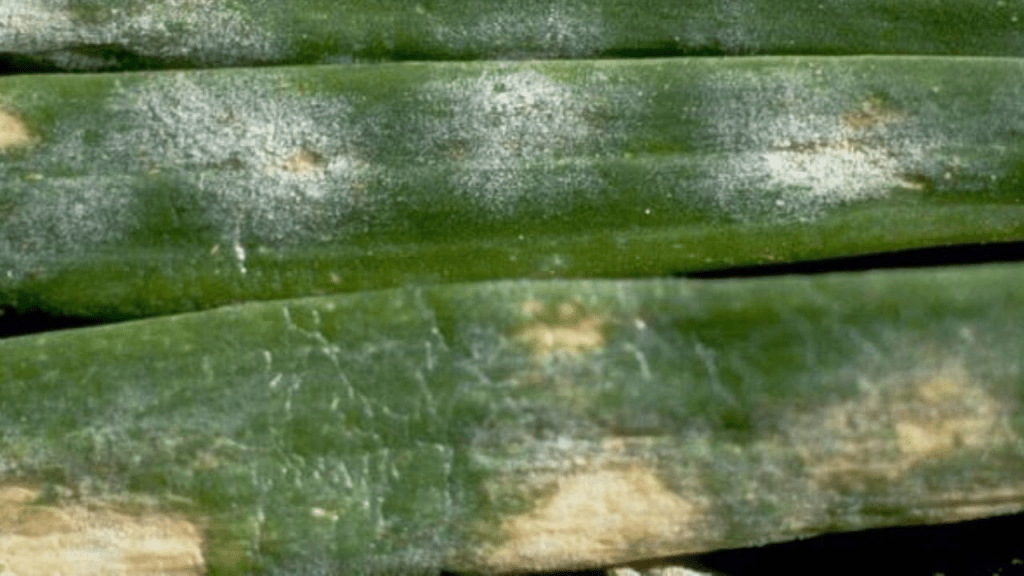Buckle up, onion enthusiasts, and get ready for a wild ride through the world of onion farming in Kenya! At Onion Doctor, we’re peeling back the layers on powdery mildew, the sneaky fungal villain threatening your precious bulbs. Onion farming in Kenya is no small feat—it’s a vibrant dance of sweat, soil, and spice that powers kitchens from Nairobi to Mombasa. Whether you’re a seasoned farmer in Nyeri or a newbie in Kajiado, onion farming in Kenya demands vigilance against this dusty white menace. With onion farming in Kenya fueling local markets and global exports, powdery mildew can crash the party, slashing yields and breaking hearts. But fear not! Onion farming in Kenya thrives when armed with knowledge, and we’re here to make you the superhero of your fields. Join us as we dive into this epic battle to keep onion farming in Kenya flourishing, ensuring every bulb shines bright in the markets!

POWDERY MILDEW IN ONION FARMING
Powdery mildew in onions is caused by the fungus Leveillula taurica, a stealthy pathogen that infects onions, garlic, and over 1,000 plant species worldwide. Unlike downy mildew, which thrives in wet conditions, powdery mildew prefers warm, dry environments, making it a unique challenge for onion farming in Kenya, especially in regions like Ukambani or coastal areas. This disease manifests as white, coarse-textured fungal growth on onion leaves, often mistaken for dust at first glance. If left unchecked, it can reduce bulb quality and yield, impacting the profitability of onion farming in Kenya.

IMPACT OF POWDERY MILDEW ON ONION FARMING IN KENYA
- Yield Losses: Up to 30% reduction in bulb size and quality.
- Market Impact: Smaller, less appealing bulbs fetch lower prices in markets.
- Increased Costs: Additional expenses for fungicides and labor to manage outbreaks
IDENTIFYING POWDERY MILDEW IN ONION FIELDS
Early detection is critical for managing powdery mildew in onion farming in Kenya. Look for these symptoms:
- White Fungal Growth: Coarse, white mycelium on leaves, often starting on older foliage.
- Leaf Discoloration: Yellowing or browning of leaves, with edges curling upward.
- Spore Characteristics: Primary spores (conidia) are pointed, while secondary spores are cylindrical and rounded, visible under a microscope.

CONDITIONS FAVOURING POWDERY MILDEW IN ONIONS
- Temperature: Optimal range of 20-30°C, common in regions like Emali and Mai Mahiu.
- Dry Weather: Unlike downy mildew, powdery mildew doesn’t require wet leaves, making it a threat during dry spells.
- Poor Air Circulation: Dense plantings or inadequate spacing can increase humidity around plants, favoring fungal growth
MANAGEMENT STRATEGIES FOR POWDERY MILDEW
At Onion Doctor, we recommend an integrated approach to manage powdery mildew effectively. Here are proven strategies tailored for onion farming in Kenya:
1. CULTURAL PRACTICES:
- Crop Rotation: Rotate onions with non-host crops like maize or legumes to break the disease cycle. Avoid planting onions in the same field for at least 2-3 years.
- Clean Tillage: Remove and destroy crop residue after harvest to reduce fungal spores.
- Proper Spacing: Space plants 30cm apart with rows and 15cm apart within plants to improve air circulation and reduce humidity.
- Drip Irrigation: Use drip irrigation instead of overhead watering to keep foliage dry, minimizing fungal spread.
2. PLANT RESISTANT VARIETIES:
- Choosing disease-resistant onion varieties is a game-changer for onion farming in Kenya. Varieties like Neptune F1 and Red Passion F1 show resistance to powdery mildew and other diseases like purple blotch. These hybrids also offer high yields (up to 15-20 tonnes per acre) and long shelf life, making them ideal for Kenyan markets.
3. FUNGICIDE APPLICATION:
When powdery mildew is detected, timely fungicide use is essential:
- Protective Fungicides: Apply products like sulfur-based fungicides before symptoms appear in high-risk areas.
- Systemic Fungicides: Use systemic fungicides for curative action if the disease is established. Always follow label instructions and rotate fungicides to prevent resistance.
- Application Timing: Spray early in the morning when temperatures are cooler to maximize efficacy.
| Week | Pesticide | Fungicides | Fertilizer |
| Land Preparation | Decomposed Manure | ||
| 1 | Active Ingredient | Active Ingredient | First Top dressing |
| 2 | Mancozeb | ||
| 3 | Profenofos | ||
| 4 | Acephale | Carbendazim |
4. REGULAR SCOUTING:
Frequent field inspections are vital for early detection. Scout fields weekly, especially during warm, dry weather, and check older leaves for white mycelium. Early intervention can save your crop and reduce losses in onion farming in Kenya.
Contact us for: Onion seedlings, Garlic seedlings, Germinated garlic cloves, Farm planning services, Soil testing, training on onion and garlic growing, Drip irrigation installation and maintenance, Agronomic support, Onion and Garlic value pack and Farm management. For free consultation, placing orders or booking a visit with an agronomist, please contact us via Call or what’s app +254703982228, Email: Info@oniondoctor.co.ke. You can also check out our social media handles for daily updates on TikTok: https://www.tiktok.com/@oniondoctorke?_t=ZM-8wmsTu0qumO&_r=1 Instagram: https://www.instagram.com/oniondoctorke?igsh=MTVoaHF3aWUydTJzaQ==Facebook:https://www.facebook.com/share/16SwgYn2dG/ Youtube:https://youtube.com/@oniondoctorke?si=u5Jnd-r0qU9UDYqL and Twitter: https://x.com/OnionDoctorKe?t=FR3JXlS_oN1vjjUgAtfyzg&s=09